Get Started for FREE
Sign up with Facebook Sign up with X
I don't have a Facebook or a X account

 Your new post is loading... Your new post is loading...
 Your new post is loading... Your new post is loading...
BigField GEG Tech's insight:
Traditional toxicological investigations performed on animals (in vivo) are expensive, time-consuming and may cause animal suffering. But research from Umeå University demonstrates that a neuronal cell model, derived from mouse, can be used to evaluate the neurotoxic effect of chemicals. The alternative toxicity risk assessment could reduce reliance on animal testing while also enable quick large scale toxicity evaluations.
BigField GEG Tech's insight:
Here the scientists used CRISPR system to generate the first mutant lines in ants by disrupting orco, a gene required for the function of all ORs. They find that orco mutants exhibit severe deficiencies in social behavior and fitness, suggesting that they are unable to perceive pheromones.
The domestic pig is an important “dual purpose” animal model for agricultural and biomedical applications.
BigField GEG Tech's insight:
This report demonstrates for the first time, the generation of gene targeted animals by direct injection of Cas9 ribonucleoprotein complex and short stretches of DNA sequences into porcine zygotes. The Cas9 protein from Streptococcus pyogenes was pre-complexed with a single guide RNA targeting downstream of the ubiquitously expressed COL1A gene, and co-injected with a single-stranded repair template into porcine zygotes. Using this approach a line of pigs that carry pseudo attP sites within the COL1A locus to enable phiC31 integrase mediated introduction of transgenes has been generated. This new route for genome engineering in pigs via zygote injection should greatly enhance applications in both agriculture and biomedicine.
BigField GEG Tech's insight:
In this work, the scientists propose a strategy that could achieve conditional KO of multiple genes in mouse with Cre recombinase dependent Cas9 expression. By transgenic construction of loxP-stop-loxP (LSL) controlled Cas9 (LSL-Cas9) together with sgRNAs targeting EGFP, they showed that the fluorescence molecule could be eliminated in a Cre-dependent manner. Compared to the traditional Cre-flox cKO strategy, this sgRNAs-LSL-Cas9 cKO system is simpler and faster, and would make conditional manipulation of multiple genes feasible.
Cell Reprogram. 2017 Mar 24. doi: 10.1089/cell.2016.0028. [Epub ahead of print]
BigField GEG Tech's insight:
In this study, the Sprague Dawley rat iPSCs were generated using lentiviral method. The p53 gene was targeted in rat iPSCs using homologous recombination mediated by P53 zinc-finger nucleases (ZFNs). The results of this work showed that these rat iPSCs were pluripotent status. P53 gene was targeted successfully with high efficiency by coelectroporating the donor targeting vectors and p53 ZFN vector to these rat iPSCs.
One of the companies trying to revive the once-failed notion of xenotransplantation---transplanting animal organs or tissues into humans---has raised a sig
BigField GEG Tech's insight:
The $38 million Series A round announced by Cambridge, MA-based firm eGenesis comes as the field of human-compatible organs grown in animals, while still years from real products, is back in play because of advances in new biological modification techniques including the genome editing tool CRISPR-Cas9.
BigField GEG Tech's insight:
Using the CRISPR/Cas9 system for induction of targeted double-strand breaks, gene editing can be performed in a single step directly in mouse zygotes. This article covers the design of knockout and knockin alleles, preparation of reagents, microinjection or electroporation of zygotes and the genotyping of pups derived from gene editing projects.
Mice with targeted point mutations are generated efficiently using Cas9-cytidine deaminase fusions.
BigField GEG Tech's insight:
Base editors (BEs) composed of a cytidine deaminase fused to CRISPR–Cas9 convert cytidine to uridine, leading to single-base-pair substitutions in eukaryotic cells. In this work, the authors delivered BE mRNA or ribonucleoproteins targeting the Dmd or Tyr gene via electroporation or microinjection into mouse zygotes. F0 mice showed nonsense mutations with an efficiency of 44–57% and allelic frequencies of up to 100%, demonstrating an efficient method to generate mice with targeted point mutations.
Increasing cashmere yield is one of the vital aims of cashmere goats breeding. Compared to traditional breeding methods, transgenic technology is more efficient and the piggyBac (PB) transposon system
BigField GEG Tech's insight:
Increasing cashmere yield is one of the vital aims of cashmere goats breeding. For the present study, donor fibroblasts were stably transfected via a piggyBac (PB) donor vector containing the coding sequence of cashmere goat thymosin beta-4 (Tβ4) and driven by a hair follicle-specific promoter, the keratin-associated protein 6.1 (KAP6.1) promoter. Five transgenic cashmere goats were generated following somatic cell nuclear transfer (SCNT). Histological examination of skin tissue revealed that Tβ4-overexpressing, transgenic goats had a higher secondary to primary hair follicle (S/P) ratio compared to wild type goats. This indicates that Tβ4-overexpressing goats possess increased numbers of secondary hair follicles (SHF). These results indicate that Tβ4-overexpression in cashmere goats could be a feasible strategy to increase cashmere yield.
BigField GEG Tech's insight:
Rats were the first mammalian species domesticated for scientific purposes, and they soon became the most widely used animal model in biomedical sciences, including cardiovascular research and behavioral neuroscience. Yet, after the development of technologies to manipulate genes, researchers largely shifted to the use of mice. However, as the authors lay out with examples from drug addiction, social behavior, and cardiovascular research, rats have experimental advantages over mice. With the introduction of zinc-finger nuclease (ZFN), transcription activator-like effector nuclease (TALEN) methodologies, and, specifically, the clustered regularly interspaced short palindromic repeats (CRISPR) associated system, gene targeting is no longer limited to mice. Development of genetic technologies in rats allows researchers to take advantage of the unique opportunities offered by this species in biomedical research.
BigField GEG Tech's insight:
David Ishee’s plan was simple, if not exactly free of complication. From the shed that functions as his laboratory in rural Mississippi, he hoped to use genetic engineering to rid dogs of the types of terrible disorders caused by decades of high-end breeding.
BigField GEG Tech's insight:
Now, using a novel PET radiotracer called Neuroflux, a team of researchers from the Athinoula A. Martinos Center for Biomedical Imaging at Massachusetts General Hospital (MGH) and the MassGeneral Institute of Neurodegenerative Disease has found a way to quantify olfactory sensory neurons and thus improve measurements of olfactory health. They describe their findings in the February issue of The Journal of Clinical Investigation. |
BigField GEG Tech's insight:
Using the gene-editing system known as CRISPR, MIT researchers have shown in mice that they can generate colon tumors that very closely resemble human tumors. This advance should help scientists learn more about how the disease progresses and allow them to test new therapies.
The CRISPR/Cas9 system has recently been adapted for generating knockout mice to investigate physiological functions and pathological mechanisms.
BigField GEG Tech's insight:
Here, the scientists report a highly efficient procedure for brain-specific disruption of genes of interest in vivo. Their procedure combining the CRISPR/Cas9 system and in utero electroporation and they showed that it is an effective and rapid approach to achieve brain-specific gene knockout in vivo.
Startup says it will edit pigs’ genes to prepare organs for harvest.
BigField GEG Tech's insight:
The plan, says the company, is to use the gene-editing method known as CRISPR to introduce extensive DNA modifications into pigs as a way of humanizing their organs so they won’t get rejected if transferred into a person. (The back of the T-shirt reads: “PS, I like my bacon extra CRISPR’ed.”) The company is a spinout of the lab of Harvard Medical School geneticist George Church. He and cofounder Luhan Yang, who is also chief scientific officer, showed in 2015 that using gene editing, a novel and powerful way of modifying DNA inside living cells, they could eliminate viruses that lie latent in the pig’s genome.
BigField GEG Tech's insight:
The Polycomb Group protein EZH2 is upregulated in most prostate cancers, and its overexpression is associated with poor prognosis. In this study, the authors developed one such transgenic mouse model for conditional overexpression of Ezh2. Compounding a previously described Bmi1-transgene and Pten-deficiency prostate cancer mouse model with the Ezh2 transgene did not enhance tumour progression or drive metastasis formation. In conclusion, they here report the generation of a wildtype Ezh2 overexpression mouse model that allows for intravital surveillance of tissues with activated transgene. This model will be an invaluable tool for further unravelling the role of EZH2 in cancer.
BigField GEG Tech's insight:
This article provides detailed methods for genome editing using the RNP approach with synthetic guide RNAs using lipofection or electroporation in mammalian cells or using microinjection in murine zygotes, with or without addition of a single-stranded HDR template DNA.
BigField GEG Tech's insight:
In this work, Tn5 and Sleeping Beauty (SB) transposon systems were evaluated for transgenesis by simple cytoplasmic injection in livestock zygotes. The Tn5 approach did not result in transgenic lambs. In contrast, the Sleeping Beauty injection resulted in 2 lambs (29%) carrying the transgene. Both animals exhibited cellular mosaicism of the transgene. The extraembryonic tissues (placenta or umbilical cord) of three additional animals were also transgenic. These results show that transpositional transgenesis by cytoplasmic injection of SB transposon components can be applied for the production of transgenic lambs of pharmaceutical interest.
Genome editing using the CRISPR/Cas9 RNA-guided endonuclease system has rapidly become a driving force for discovery in modern biomedical research. This simple yet elegant system has been widely used
BigField GEG Tech's insight:
Here, the scientists CRISPRtools platform supports loss-of-function alleles and precision knock-in mutations using single-stranded donor oligonucleotides in order to facilitate the use of CRISPR/Cas9. While there are several tools that facilitate CRISPR/Cas9 design and screen for potential off-target sites, the process is typically performed sequentially on single genes, limiting scalability for large-scale programs. . In proof-of-principle experiments, the effectiveness of this approach is demonstrated using microinjection and electroporation to introduce CRISPR/Cas9 components into mouse zygotes to delete critical exons.
Modelling Down syndrome (DS) in mouse has been crucial for the understanding of the disease and the evaluation of therapeutic targets.
BigField GEG Tech's insight:
In this work, scientists developed the CRISpr MEdiated REarrangement (CRISMERE) strategy, which takes advantage of the CRISPR/Cas9 system, to generate most of the desired rearrangements from a single experiment at much lower expenses and in less than 9 months. Deletions, duplications, and inversions of genomic regions as large as 24.4 Mb in rat and mouse founders were observed and germ line transmission was confirmed for fragment as large as 3.6 Mb. CRISMERE is even more powerful than anticipated it allows the scientific community to manipulate the rodent and probably other genomes in a fast and efficient manner which was not possible before.
BigField GEG Tech's insight:
Here, the scientists report the first application of single Cas9 nickase (Cas9n) to induce gene insertion at a selected locus in cattle. They demonstrate that a single Cas9n-induced single-strand break can stimulate the insertion of the natural resistance-associated macrophage protein-1 (NRAMP1) gene with reduced, but still considerable, off-target effects. Through somatic cell nuclear transfer, they finally obtain transgenic cattle with increased resistance to tuberculosis. These results contribute to the development of CRISPR-Cas9 system for agriculture applications.
Clustered regulatory interspaced short palindromic repeats (CRISPR)/CRISPR-associated protein 9 (Cas9) technology is a powerful tool to manipulate the genome with extraordinary simplicity and speed.
BigField GEG Tech's insight:
Here, the authors report a cloning-free method to target the mouse genome by pronuclear injection of a commercial Cas9 protein:crRNA:tracrRNA:single-strand oligodeoxynucleotide (ssODN) complex into mouse zygotes. As illustration of this method, they report the successful generation of global gene-knockout, single-amino-acid-substituted, as well as floxed mice that can be used for conditional gene-targeting. These models were produced with high efficiency to generate non-mosaic mutant mice with a high germline transmission rate.
CRISPR-Cas9 is a powerful new tool for genome editing, but this technique creates mosaic mutations that affect the efficiency and precision of its ability to edit the genome.
BigField GEG Tech's insight:
Here the scientists report that tagging Cas9 with ubiquitin-proteasomal degradation signals can facilitate the degradation of Cas9 in non-human primate embryos. Using embryo-splitting approach, they found that shortening the half-life of Cas9 in fertilized zygotes reduces mosaic mutations and increases its ability to modify genomes in non-human primate embryos. Also, injection of modified Cas9 in one-cell embryos leads to live monkeys with the targeted gene modifications. These findings suggest that modifying Cas9 activity can be an effective strategy to enhance precision genome editing.
BigField GEG Tech's insight:
Here, the authors describe theirpoint of view about the CRISPR revolution for murin genetics field. |



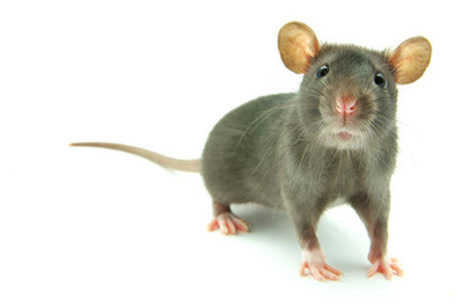





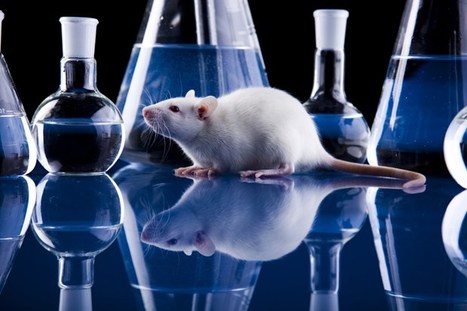


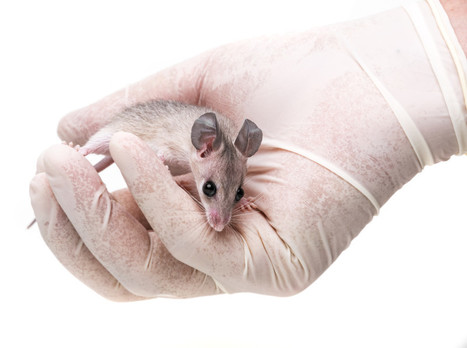




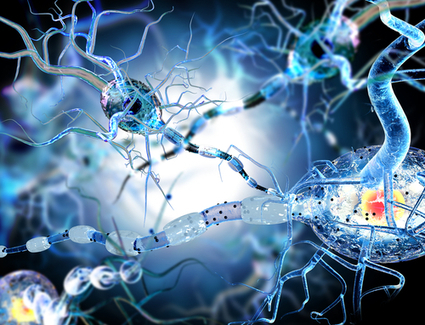


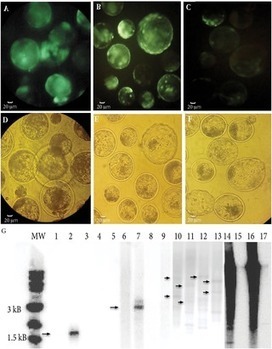



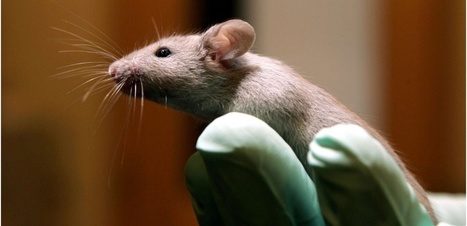





https://www.livestocktradingcompany.com/portfolios/parrot/